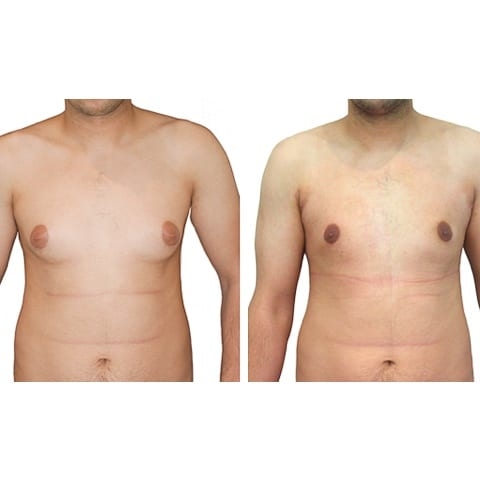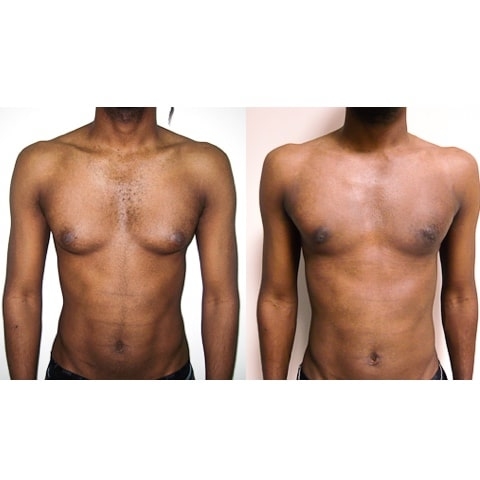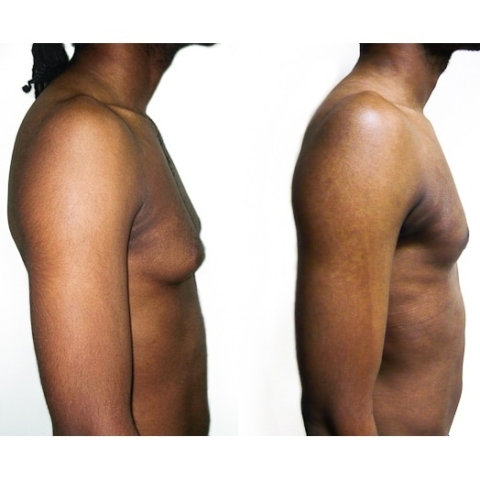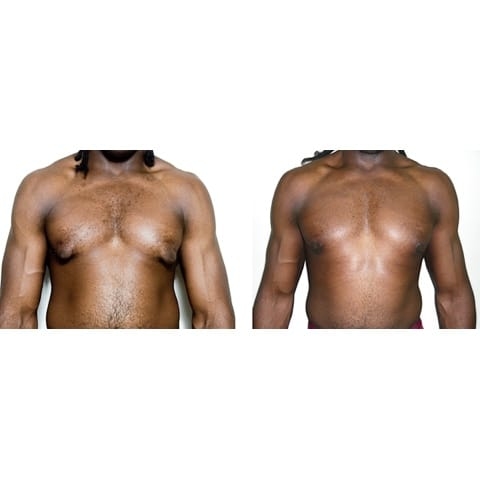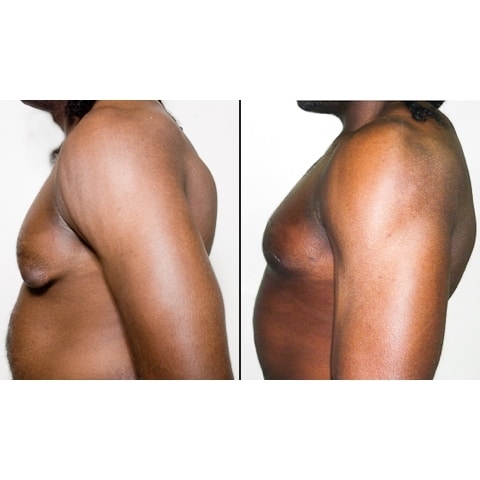Male gynecomastia cure
The strong points
- It is a simple and not very painful surgery that treats a major complex in some men
- A gynecomastia treatment may be covered by health insurance if it has a glandular component and if an endocrinological check-up is performed and found to be negative.
We almost always combine liposuction with surgical removal of the glandular core to obtain the most harmonious result possible.
Principles of the male gynecomastia treatment
Male gynecomastia is an abnormal development of the mammary gland in men. It is a common condition that can be easily and effectively treated with surgery.
Male gynecomastia is most often related to an unusual increase in the ratio of female hormones (estrogen) to male hormones (testosterone) in a man.
This can be related to a decrease in testosterone levels or an increase in estrogen levels.
There are multiple causes for this phenomenon which can be reversible.
We quote:
- endocrinological diseases: hyperthyroidism, addison's disease.
- liver disease, including alcoholic cirrhosis
- tumors of the testicles or lung or pituitary gland (prolactinoma)
- use of medication, performance-enhancing drugs or cannabis
- fatty overload
Thus, before any surgical treatment of male gynecomastia, a clinical, biological and radiological assessment must be carried out in search of a cause that may be accessible to medical treatment.
There are 3 main types of gynecomastia:
- Glandular male gynecomastia: it corresponds to a pure excess of breast tissue.
- Male fatty gynecomastia (or adipomastia): it corresponds to a pure fatty excess without excessive glandular tissue. It is often associated with a diffuse fatty overload
- Mixed gynecomastia, which represents the majority of cases
Fatty gynecomastia is treated by exclusive liposuction. Cannulas are passed through incisions of less than 4 mm (usually 2) and suck out the excess fat.
Pure glandular gynecomastia is treated by surgical removal of the mammary gland through an incision hidden in the areola (trans-areolar incision under the nipple).
The surgical treatment of mixed gynecomastia combines liposuction of the entire breast area and removal of the residual breast gland through a hidden incision in the areola.
In rare cases, additional scars are required:
- a periareolar scar if the diameter of the areola is too large (round-block technique)
- a T-shaped or horizontal mastectomy scar if the volume of the breast is so great that it has caused ptosis.
In practice
Gynecomastia surgery is usually performed under general anesthesia but can be performed under local anesthesia plus sedation (neuroleptanalgesia) in simple cases.
A specific compression garment (Romeo by Medical Z) must be worn for 15 days following the procedure.
It usually requires a day hospitalization (ambulatory surgery).
An anesthesiologist must be consulted at least 48 hours before the procedure.
No medication containing Aspirin should be taken in the 10 days preceding the operation.
A specific compression garment (Romeo from Medical Z) must be worn for 15 days following the procedure.
Questions / Answers
What are the possible complications?
A hematoma (blood clot) may occur in the hours following the operation. Its treatment requires an emergency return to the operating room.
Later on, a post-operative lymphatic effusion may appear between 5 and 15 days after the operation. It can be monitored if it is small or require a puncture.
Problems of sensitivity of the areola and nipple may be present in the 6 months following the operation.
Is it a painful procedure?
Generally speaking, no.
However, if extensive liposuction is associated, moderate pain may be present in the 7 days following the gynecomastia treatment.
Can I resume sports activities quickly after the operation?
Light physical activity (running) can be considered 10 days after the operation. Resumption of weight training, especially of the pectoral muscles, should not be considered before 1 month after the gynecomastia treatment.
Is a gynecomastia treatment covered by health insurance?
This procedure is covered by health insurance if your gynecomastia has a glandular component (isolated adipomastia is not reimbursed) and if an endocrinological assessment has been performed and does not find a medically treatable cause.
How much does the procedure cost?
If your gynecomastia treatment is covered by health insurance, our fees range from 1500 to 2300 €.
In the case of adipomastia not covered by health insurance, the total cost of the procedure is between 3200 and 3800 €.
Have a question? Please contact us!
Cosmetic surgery in Paris
Docteur Yaël Berdah and Docteur Marc-David Benjoar
Plastic surgeons in Paris France

